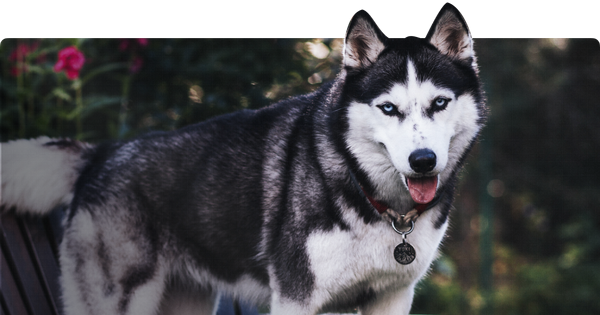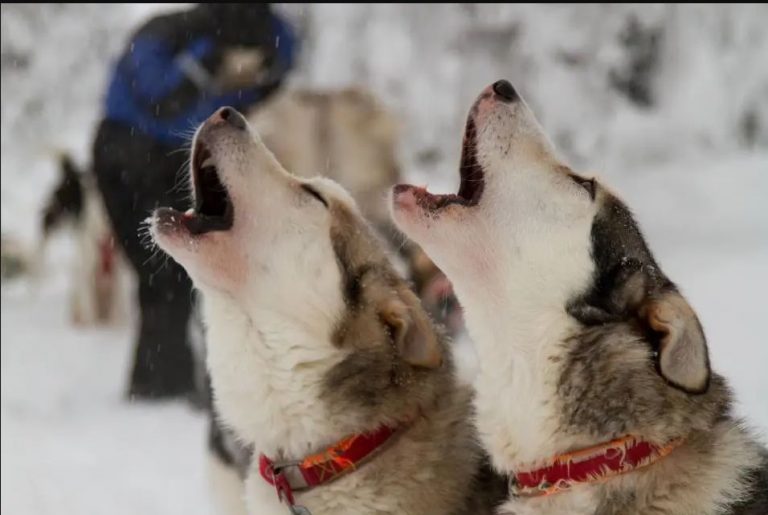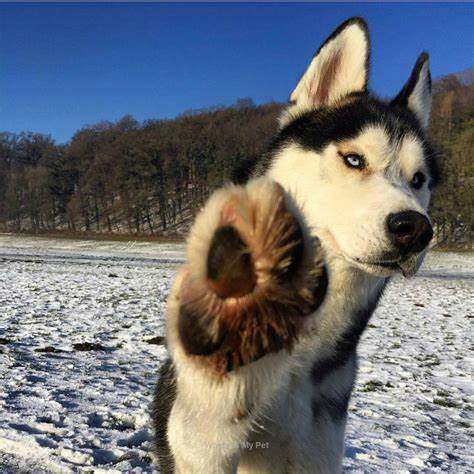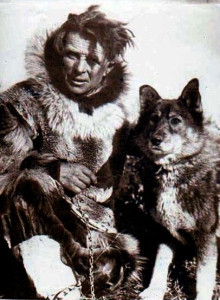About Siberian Huskies:
The Siberian husky is a medium-sized dog, slightly longer than tall. Height ranges from 50 to 60cm and weight from 13 to 26kg.
The Siberian husky has erect ears and eyes of brown to blue or maybe even one of each color (heterochromia).
The neck is carried straight and the topline is level. The well-furred tail is carried up in a sickle or sometimes straight out behind.
Siberian huskies have a very dense, plush coat with plenty of undercoat. A small ruff is found around the neck but no long fringes on the legs or tail. Color ranges from black to white and everything in-between. Most dogs do have white markings, particularly on the chest and legs.

Personality:
Siberian huskies are classic northern dogs. They are intelligent but somewhat independent and stubborn. They thrive on human company, but need firm, gentle training right from puppy hood. These are dogs bred to run, and their love of running may overcome their love for their guardians at times. Huskies cannot be trusted “off-lead”.
Siberian huskies tend to be friendly with people, including children.
Most Siberian huskies are good with other dogs, especially ones they are raised with. However, they have a high prey drive and may chase cats, birds, livestock, insects and anything else that moves.
Siberian huskies can be diggers & escape artists. Husky owners tend to have gardens with high fences/walls.
They don’t tend to bark as a rule but they do howl. A good husky howl can be heard up to 10 miles away.


Living With:
Siberian huskies were developed under harsh conditions and, not surprisingly, are easy dogs to keep. They can easily become obese if overfed or not exercised. These are dogs bred for running, and they should have a good run at least a couple of times weekly. Siberian huskies tend to be hardy dogs and often live to 14 years of age.
Early positive training and socialization are important for the Siberian Husky to focus on people. These dogs enjoy human company and like having a job to do, even if it is just jogging with you. A bored or lonely husky is a destructive husky.
Siberian huskies are not noted for watchdog tendencies but will usually alarm bark.
Grooming should be done a couple of times a week, with more grooming needed during shedding season.
Huskies “blow” their coat, usually twice a year, releasing an impressive amount of hair.
The shorter coat of the Siberian husky is less prone to mattes than the coats of other northern dogs.
History:
Both Russia and the United States like to lay claim to the Siberian Husky. The breed was developed by the Chukchi tribe of northeast Asia over 3,000 years ago to help them in their nomadic life as sled pullers. .
During the Alaskan gold rush, many sled dog races were set up for amusement as well as for checking out working stock. The dogs from the Chukchis proved to be fast runners of great endurance despite their small size.
The fame of the Siberian husky as a racing sled dog was cemented when a team of huskies raced 340 miles through raging blizzards to deliver serum for diphtheria-stricken Nome. The movie “Balto” and the many stories on the same theme have made this breed recognized by people worldwide.
While most of today’s Siberian huskies are beloved family pets, many still pull sleds in local races and enjoy running with their owners.
